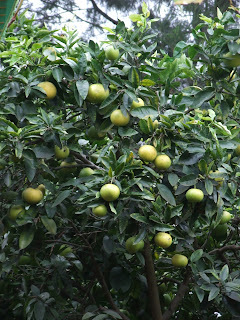Today, the stasis returns to tell me all of the stories of
disempowerment. How do we become so infused with disempowerment? Perhaps we
learn it’s safer to sit still, because otherwise you might fall. Pride comes before a fall. Defiance loses her grip and gets thrown around by forces greater
than herself. Anger screams and isn’t heard. She rises up and isn’t seen.
“I know better” is an affliction. Whichever way you apply it, you’re
equally culpable. I look at social media sometimes and find an enlightened
being telling me how to live my life. This reminds me of disempowerment.
It’s important to me that a person with knowledge does not
assume to be more knowledgeable than anyone else. That’s because a fundamental
core of my beliefs and my practice – ideally – is to honour that every being
has lived experiences. None of those experiences are more valuable or more important than others.
The person who can best judge the importance of an experience, is a person who has lived that experience.
It's frustrating that there is an archetypal force that lives in me
(along with a trillion others): the archetype of the guru. When someone calls me
a wise woman, it is meant as a compliment, but it sits uncomfortably, because who is to say I’m comparably wise,
compared to what, compared to whom? I have habits of thought, action and
emotion that are so limiting, and no matter how much I reflect on them, and
pinpoint and bookmark and try to work them out, they arise again.
So, as a practitioner, all I can do is offer you my expertise,
which is simply my lived experience. I undertake to make no judgement on yours.
*****
For years, I worked in office blocks and towers, in a very
superficial world known as “communications”. It was a world in which I didn’t
move, creativity was worn down and the “security” of the gilded cage was enough
of a carrot (apologies for mixing metaphors) to keep me from noticing the stick: the
anxiety, the depression; in other words, the suppression of spirit, of self.
*****
Yesterday, a former colleague and old friend of mine,
another who went through burn-out in the same industry, interviewed me
for academic research. She is investigating the phenomenon of burn-out in
communications and PR (I guess we are carrying out the wounded healer responsibility in
our various ways). It was a MASSIVE conversation.
When my friend asked what might be needed – in organisations
and in individual situations – to transform the culture that leads to this
phenomenon, I had a lot to say (it seemed to bubble up from some very deep,
swampy place). In a nutshell, the solution I see is for people to get real, to stop living in constant denial, to embrace anxiety and depression
as the body’s barometer that something isn’t right.
In the conversation, I had the opportunity to talk about the
places where I used to work until about six years ago – the cubicles in high-rises
in Brisbane city / Meanjin, where people in positions of colonial power made arbitrary and uninformed decisions
about Indigenous communities, about what pieces of our environment were to be
saved, and what pieces destroyed. I witnessed how even the advice of experts with university training was ignored, and this was acceptable, for example, when
coal seam gas exploration was first allowed in Queensland.
Now, I look at those places from across the river, I look at
those older towers, and the airconditioned hollow blocks of former rock that
keep sprouting among them on this subtropical country. And from that view,
again, I get the sense that the people filling those buildings are not given the opportunity to be in the full reality of this country. In those towers, they don’t have the opportunity to be
directly on the earth, they don’t have the opportunity to experience the heat
of the atmosphere, they don’t have the opportunity to experience the reality of
living below the poverty line. Those realities happen somewhere else.
So it’s easy to become divorced from those realities. And it’s easy
to become divorced from the people whose lives your decisions directly affect.
And it’s easy to become divorced from yourself.
I did the latter – divorced myself – because I
watched people making policy decisions on whims,
treating scores of talented people (included myself) as dehumanised foot
soldiers, treating those affected by the decisions as existing in a faraway
and unimaginable universe. I felt complicit, because my role was to sell the spin. I couldn’t bear the pain of that, so I squashed it
for as long as I could ... until it sprang into action and chased me.
The healing included acute treatment with antidepressants, naturopathic remedies and talk therapy, through journeys into nature and into the physical reality of my body and my mind, to a growing sense of self and a growing confidence in my ability to get back up.
Ultimately, these things known as anxiety and depression woke me up, and helped me return to myself, to a clearer sense of
reality without the spin! That is what I wish to share.


